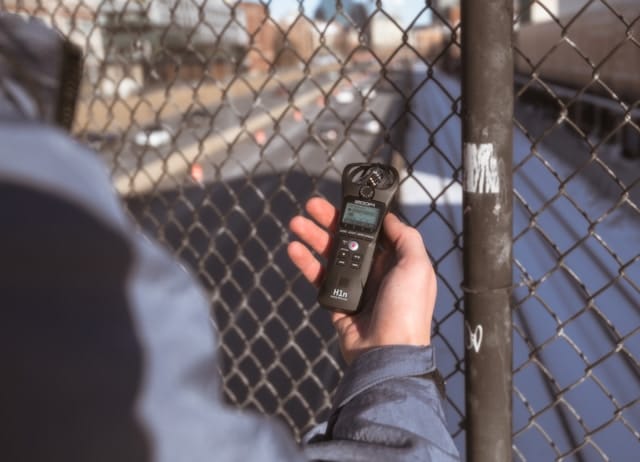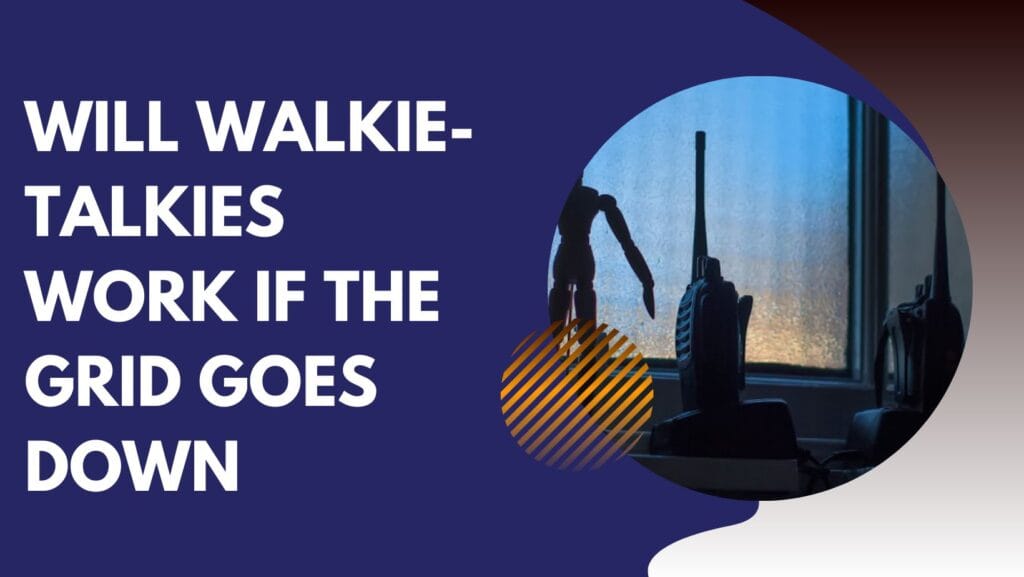Learn about Will Walkie-Talkies Work If the Grid Goes Down. Walkie-talkies work during grid failure. Learn why they stay reliable when power and networks go down.
A walkie-talkie is a radio communication device that is portable, handheld, and allows two or more individuals to communicate wirelessly over both short and long distances with the help of radio frequencies (RF). A walkie-talkie is the name of the two main features of the device, which are as follows: one can walk with the device and talk without calling numbers or using external networks, and it is possible to talk instantly.
Walkie-talkies are also known as:
- Two-way radios
- Handheld radios
- Portable communication radios
They typically consist of:
- A built-in antenna
- A speaker and a microphone
- A push-to-talk (PTT) button
- A battery or rechargeable power source
- Frequency channels for communication
Unlike cell phones that use cell towers and the internet infrastructure to send voice messages between one phone and the other, walkie-talkies utilize direct radio signaling to deliver voice messages between two devices.
Will Walkie-Talkies Work If the Grid Goes Down?
Yes, the walkie-talkies will not go out when the grid is down since it is not dependent on cell towers, power lines, or the internet. They rely on direct radio signal between devices and thus they are dependable in case of blackouts or emergencies. Communication can be made to the walkie-talkie even without an external infrastructure as long as the batteries of the walkie-talkie are charged.
Key reasons walkie-talkies work during a grid failure:
- They do not involve cell towers; they involve radio frequencies.
- They are powered by a battery and not by wired electricity.
- Communication can be quite often be device-to-device (simplex).
- Numerous models do not have to operate with repeaters.
Due to this autonomy, walkie-talkies are one of the few communication mediums that continue to work even at:
- Power outages
- EMP or cyberattacks
- Natural disasters
- Network failures
- Government-mandated shutdowns
- Remote area travel
Two (or more) radios on different frequencies will communicate whether the grid is present or not, so long as they are powered.
Benefits of Walkie-Talkies in Grid-Down Scenarios
In the event of a power grid failure, walkie-talkies are an instant and reliable medium of communication. They do not have any cell towers, utilize independent radio frequencies, and use long-lasting batteries. Their strength, ability to communicate as a unit, and as well as their performance in isolated or hindrance-prone locations make them vital in safety, organization, and emergency reaction in any grid-down scenario.
Ways to Communicate After the Grid Goes Down
CB Radios
CB radios provide a medium-range communication between vehicles and their base stations without the use of the power grid. They can be used in local coordination, road updates, and emergency communications in case of an outage or disaster.
Walkie Talkies
Walkie-talkies are short-range communication gadgets that are battery-operated and use radio frequencies. They do not rely on cell towers and therefore serve families, teams, and neighborhoods in the case of grid-down.
Ham Radios
Ham radios provide long-range communications and an emergency network when the grid goes down. Under licensed operators, local, national, or international contacts can be accessed, and this guarantees information and coordination during major disasters.
Satellite Phones
Satellite phones are based on satellites and not on terrestrial networks, so that even with the grid collapsing, one can still communicate. They also offer reliable long-distance calling during emergency situations, long-distance travelling, and massive emergencies.
Emergency Radio
During power outages, emergency radios will be able to receive weather alerts, government messages, and rescue information. Most of them have solar charging devices, hand crank, and batteries, and they are dependable when the grid goes down.

How Walkie-Talkies Work During Grid Failure
1. Battery-Powered Operation
Walkie-talkie use:
- Replaceable AA/AAA batteries
- Rechargeable Li-ion packs
- Solar or hand-crank charging (in some models)
As long as you can supply battery power, your walkie-talkie will function normally.
2. Independent Radio Frequencies
Walkie-talkies transmit and receive radio waves of certain frequencies. These frequencies:
- Labor without power systems.
- Unhackable to grid blackouts.
- Keep moving in times of a disaster..
That is why when a crisis occurs, the radios are essential to emergency services, rescue teams, and military units.
3. Simple Point-to-Point Communication
Most consumer walkie-talkies use simplex communication, meaning:
- One radio speaks, the other listens
- No repeaters or towers are required
This ensures functionality even in total grid failure.
Tips for Using Walkie-Talkies When the Grid Goes Down
- Store additional batteries at home.
- Keep 2 or more radios in a family.
- Reach consensus with your group on common channels.
- Perform monthly tests
- Carry a solar charger or power bank.
- Know these basic radio etiquette.
Preparedness increases reliability dramatically.
Battery Life During a Grid Collapse
Battery life becomes crucial in long-term grid-down situations.
Typical walkie-talkie battery life:
| Radio Type | Normal Use | Standby Mode |
| FRS Radios | 10–12 hours | 50–70 hours |
| GMRS Radios | 12–18 hours | 70–100 hours |
| HAM Radios | 10–20 hours | 70–120 hours |
| Professional Radios | 20–24 hours | 100+ hours |
FAQs
Do walkie-talkies need cell service or Wi-Fi?
No, walkie-talkies do not require Wi-Fi, SIM cards, or cell towers since they operate through radio frequency and communicate directly between the radios that are on the same frequency.
Can I use walkie-talkies during emergencies like storms or earthquakes?
Yes. The use of walkie-talkies in disasters is common practice because they rely on an alternate mode of communication when cell towers and power lines go down.
Do walkie-talkies work long-distance during a blackout?
Yes, provided that both radios are in range. GMRS and HAM radios can extend their communication over a few miles, whereas FRS radios work well only at short distances.
Conclusion
Walkie-talkies are still one of the surest means of communication in the time of grid failures. Since they are battery-powered and use direct radio signals, they are effective even in the event of network failure. Walkie-talkies are safe and reliable since they provide a line of communication even in case of a disaster with the right preparation, backup batteries, and communications.

